Overview
Mirror,
mirror on the wall, are my eyes big or small? How can you get your children to
observe their facial features and create a self-portrait?
Where can you find examples of self-portraits by Singapore artists? How can you help your children be confident in talking about the artworks by artists, their friends and themselves?
Here’s a lesson idea that weaves in a visit to National Gallery Singapore where children can observe how Singapore and Southeast Asian artists have painted their self-portraits and explore using different craft materials to create their own portraits. Children will have opportunities to explore TWO learning areas through an integrated approach in this learning experience.|
Learning Areas |
Learning Goals |
|
Aesthetics and Creative Expression (A&C) |
LG3: Create art using experimentation and imagination |
|
Language and Literacy (L&L) |
LG2: Speak to convey meaning and communicate with others |
Learning Objectives:
Children
will be given opportunities to:
- Observe and talk about their facial features
- Create a self-portrait from observation, using different craft materials
- Talk about artworks by Singapore and Southeast Asian artists, their friends and themselves
#1 Developing observation skills
Guide
your children to look at a subject in detail to help them hone their
observation skills. In this lesson on self-portraits, get them to examine their
own facial features.
How?
1. Play a guessing game. Use sticky notes to cover the facial features of a familiar person in a close-up photograph. Remove the sticky notes one at a time to gradually reveal the facial features and invite your children to guess who the person is.
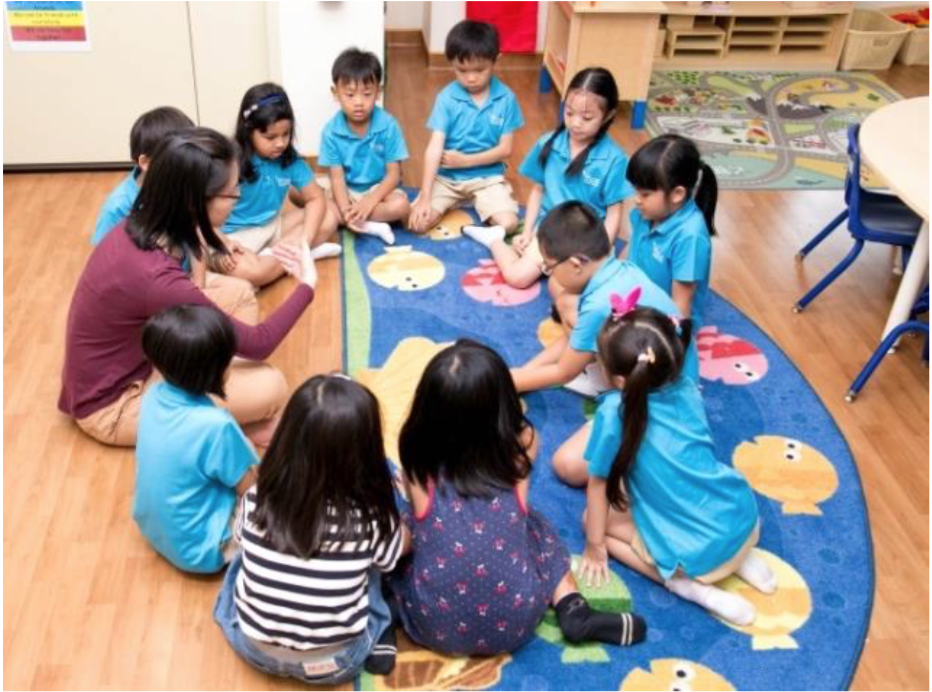
Honing children’s observation skills through a guessing game
2. Get the children to sit in front of a mirror (e.g. in the music and movement room) or provide each child with a hand-held mirror. Guide them to observe and trace their facial features on the mirror. Encourage them to talk about what they see. Use questions or model the use of words to describe their facial features.
Examples of guiding questions:
- Are your eyebrows straight or curved?
- What is the shape of your eyes? Round? Oval?
- Do you have thick or thin lips?
#2 Viewing and talking about artworks
Paintings
by well-known artists can expand the way children look at art and the world. It
helps them to understand and make meaning of art around them. They become more
aware of the how and why of art making, which enhances their aesthetics development
and creativity.
How?
1. Visit National Gallery Singapore with your children
| Educate your children to be polite gallery visitors. Refer to the etiquette guide in the annex to help your children learn the Dos and Don’ts when visiting the gallery. |
|---|
You may want to consider booking a customised school tour with National Gallery Singapore (at least a month in advance). Meet with the Gallery Education representative and discuss your selection of self-portraits by Singapore and Southeast Asian artists. While the docent will spend more time on the selected self-portraits, he/she will also point out other artworks in the gallery.
Refer to the next three pages for recommended artworks exhibited in National Gallery Singapore, including facilitation questions that will help deepen children’s understanding and appreciation of art.
ARTWORK 1
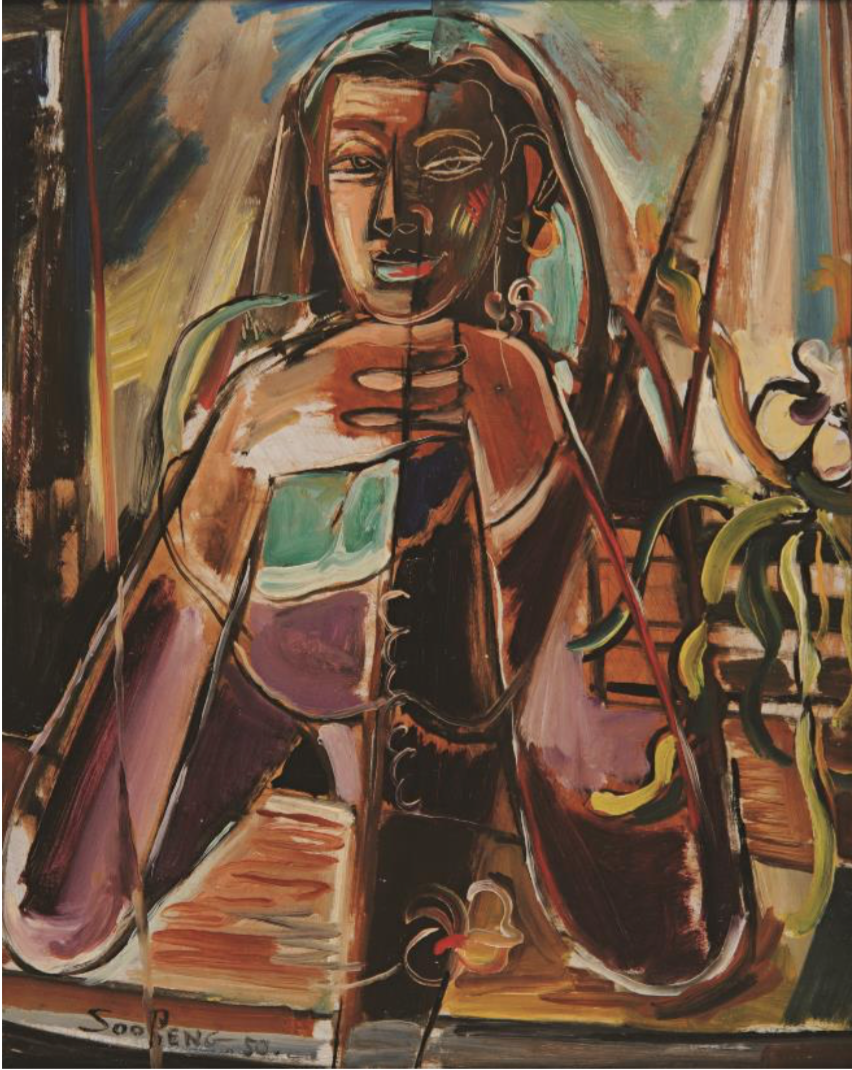
What do you see?
What does this painting make you want to explore?
ARTWORK 2
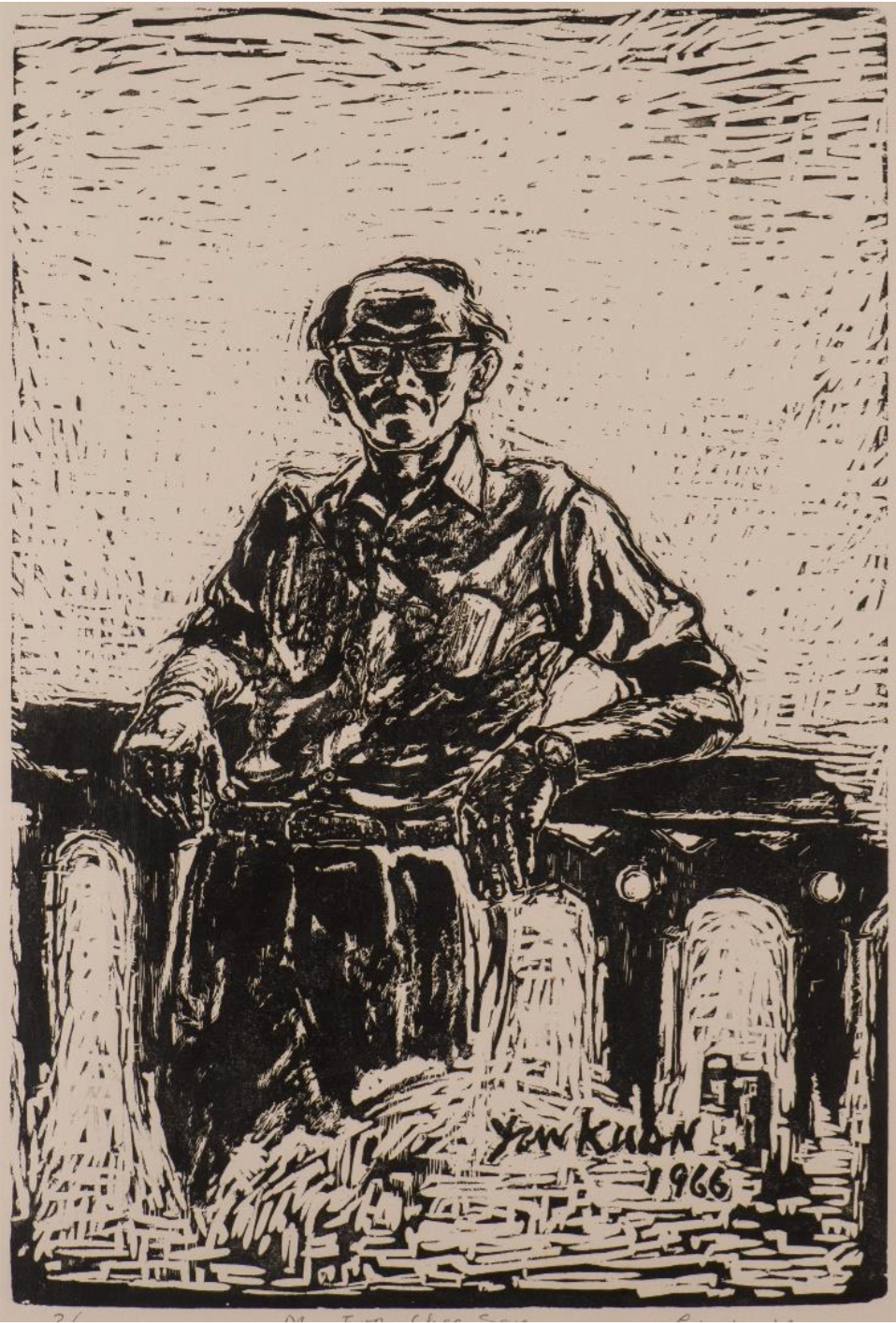
Lim Yew Kuan
Collection of National Gallery Singapore
What do you see?
What did you learn from this artwork?
ARTWORK 3
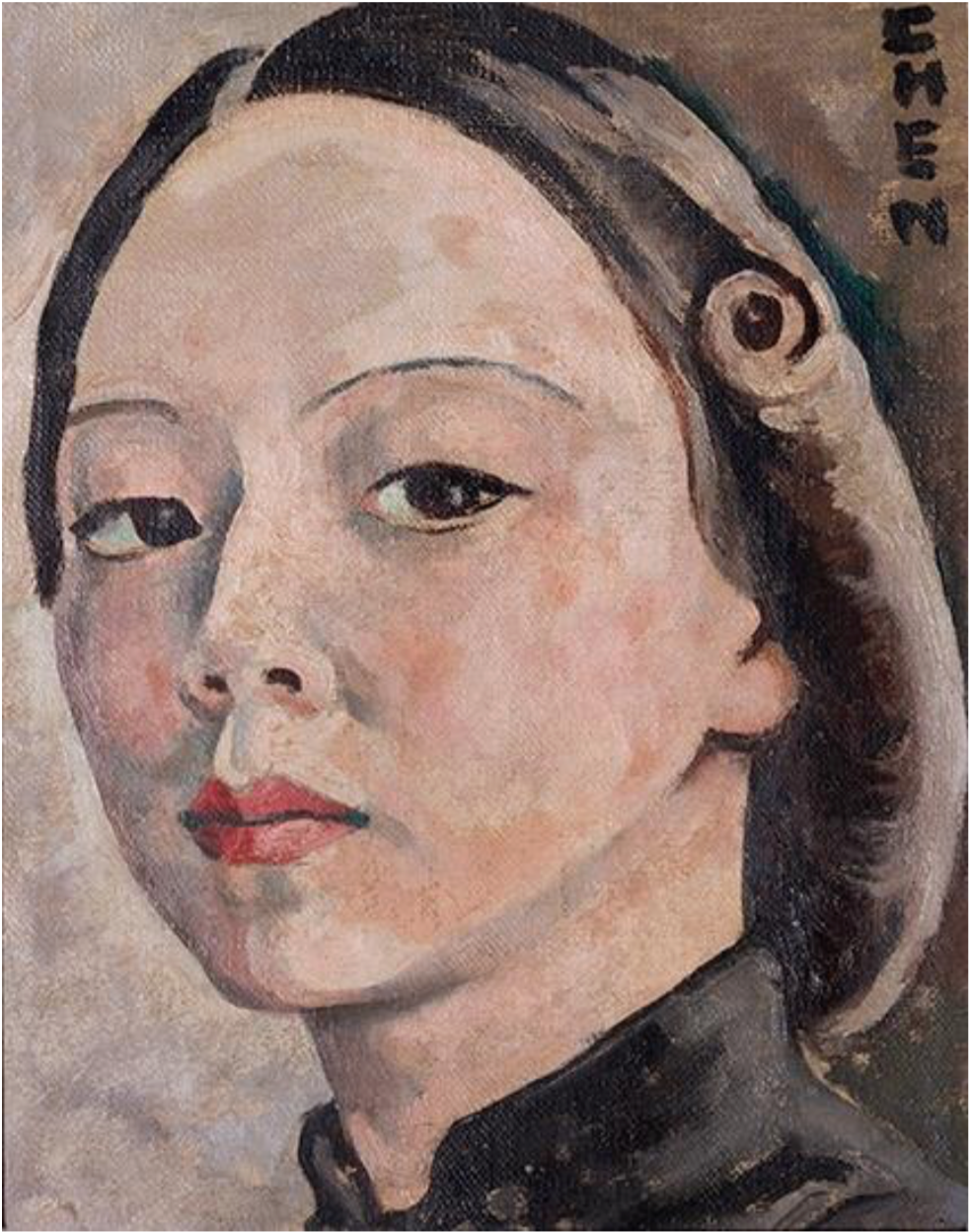
Georgette Chen
Gift of Lee Foundation
Collection of National Gallery Singapore
What do you see?
What makes you say that?
2. Conduct a class discussion about the self-portraits they viewed in the gallery
Invite your children to talk about the artworks that they had viewed. Display A3-sized pictures of the selected self-portraits on mounting boards as visual stimuli for the children.
Suggested questions:
- Which is your favourite portrait? Why?
- Look at the different styles of the self-portraits. Which do you like best?
It is not necessary to go through the medium used and the techniques employed by the artists. Use this experience to expose children to the different ways in which the artists have done their self-portraits.
- After looking at the self-portraits in the Gallery, how would you pose for your self-portrait?
Using an A2-sized wooden frame, get the children to explore posing for their self-portraits. Take photographs of their poses.
#3 Making art using a variety of materials
Providing access to a variety of materials gives your children the flexibility to explore and decide on how they want to create their self-portraits.
How?
1. Display the A3-sized pictures of the self-portraits from National Gallery Singapore and photographs of the children posing behind the wooden frame as visual stimuli.
2. Provide each child with a mirror and encourage them to look at the mirror when drawing their self-portraits.
3. Set up with different kinds of materials. Allow your children to unleash their creativity as they explore and select materials to create their self portrait.
Include different art media (e.g. coloured pencils, crayons, markers and paint) and scrap materials (e.g. yarn, strips of paper and pieces of fabric).

Creating self-portraits using a variety of materials
#4 Appreciating and reflecting on artworks made
When children feel that their artworks are valued, this helps to build their self-confidence and motivation to continue to create and learn.
|
Keep an open and safe environment for your children to freely share and talk about their artwork and their friends’ artwork. This encourages them to be confident about their views. Remind them that there are no right or wrong answers when sharing or commenting on artworks and give them positive affirmation through your words and body language.
|
How?
1. Mount the self-portraits on A3-sized mounting
boards labelled with the names of the children. Display them and invite the
children on a gallery walk.
2. Guide your children to talk about their self-portrait and encourage the other children to comment on their friends’ artwork.
Examples of guiding questions:
- What do you like about _____’s (name of child) self-portrait?
- Why do you say that?
- How do you think _____ was feeling when he/she painted his/her self-portrait?
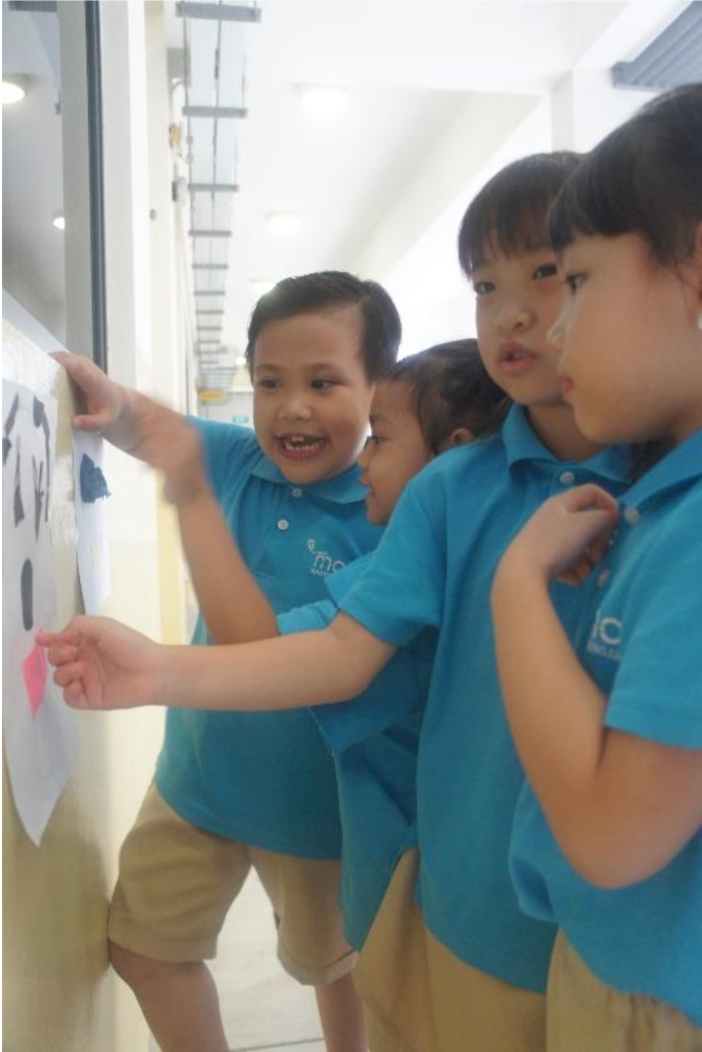
Children commenting on their self-portraits
Annex
National Gallery Singapore
Brief your children about Gallery Etiquette before the Learning Journey.
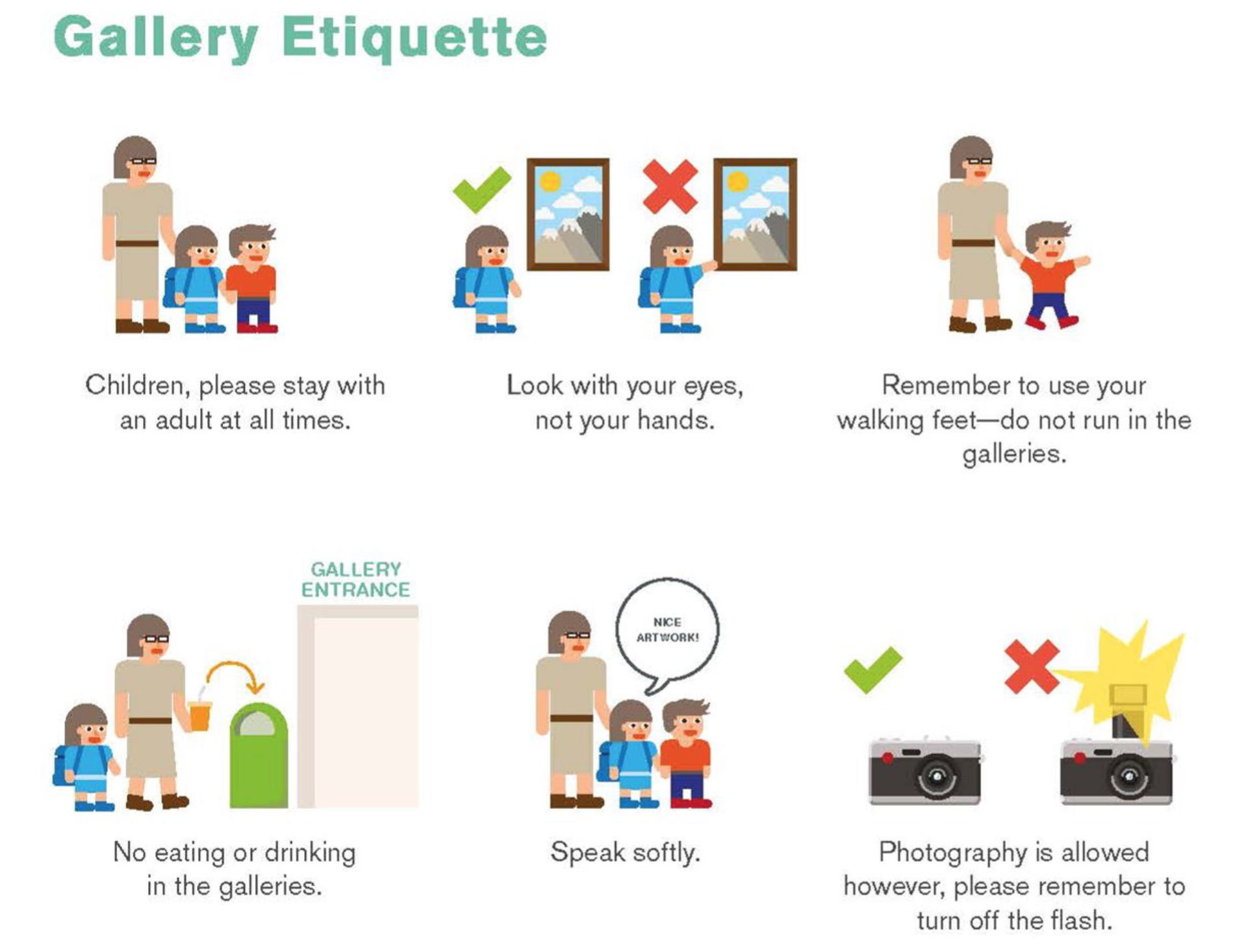
Copyright in the content of this Learning Resource may also reside in persons and entities other than, and in addition to, the Gallery. The Gallery seeks to share our artworks with as many people as we can. We are fully committed to respecting the intellectual property rights of others and always use our best efforts to obtain permission for artwork images used. Please contact us should you have any queries about this. Unless otherwise mentioned, all artworks are in the collection of National Gallery Singapore and images have been provided through the courtesy of the National Heritage Board. This Learning Resource is published by Ministry of Education, Singapore. All rights reserved. Materials in this Learning Resource may not be reproduced in part or in whole without written consent of the Gallery. Every effort has been made to ensure the accuracy of information within this Learning Resource. However, changes are sometimes unavoidable and the Gallery reserves the right to make modifications to the programmes without prior notice. Please check www.nationalgallery.sg to confirm details closer to each event. The views and all opinions expressed by speakers, facilitators and docents at the workshops and tours do not necessarily represent the position of the Gallery. Published in January 2017. All information is correct at time of print.